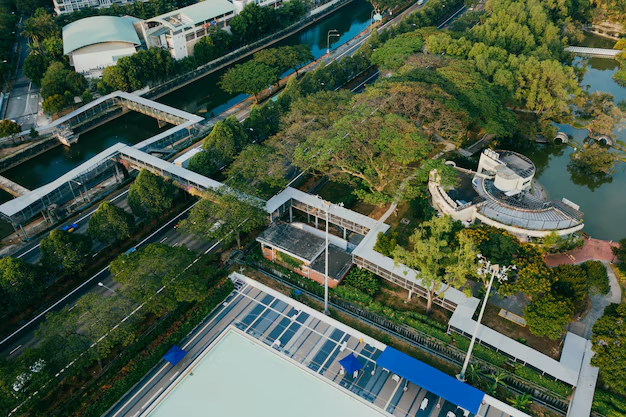Conduit systems are the foundation of both residential and commercial modern infrastructure and the quality and reliability of such systems are critical. The safe and efficient transport of electrical wiring, communication pipe, and other important lines have relied on Conduit Systems to help them operate smoothly across all industries and in the homes as well. When installed and maintained properly, these systems protect the cables they contain as well as keep these wires from wear, tear, and environmental damage. In the current market, the selection of materials and the configuration of the conduit systems have a significant role in durability, reliability, and practicability particularly as the amount of electronic devices and smart home systems are increasing. In this article, we explore the best conduit materials to keep our spaces functional and futureproof.
The Backbone of Modern Infrastructure
Electricity and data are delivered perfectly through conduits that act as the backbone. Over the past few years, conduit systems have evolved from protecting simple electrical pipes to communication lines. As smart devices and the IoT (Internet of Things) have come up, our infrastructure has become quite dependent on strong, secure systems that meet the highest data transfer requirements as well as energy efficiency. Regardless of whether it is for electrical or communication lines, every conduit system has to survive temperature changes, moisture, and physical pressure. For example, infrastructure in industrial settings, such as harshly heated conditions, exposure to chemicals, and physical impact can compromise the durability of any material. Such risks can be mitigated by selecting the right conduit, which minimizes the safety hazard and cost of repairs.
Exploring Materials for Conduit Systems
The material of the conduit system is important. The materials most commonly used today are steel, aluminum, and polyvinyl chloride (PVC). Traditional favorites for strength and rigidity are steel and aluminum — especially in heavy-duty applications. Yet, PVC is beginning to be used for many modern applications in particular residential and light commercial settings. There are several advantages of PVC conduits over metallic conduits. In addition to being lightweight and easy to install, these are also corrosion-resistant and are perfect for outdoor as well as moisture-prone environments. Also, PVC conduits are nonconductive which gives an extra layer of safety, reducing the risk of an electrical shock. The natural attributes of PVC are particularly useful in insulation applications, allowing for less insulation thickness to be added, thereby cutting costs and making for easier installation.
Benefits of PVC in Contemporary Conduit Solutions
One of the most significant advantages of PVC is its longevity. Unlike metal, which can degrade and corrode over time, PVC is impervious to rust and can maintain its structural integrity for decades. This durability makes it particularly suited to harsh environments, such as those exposed to water, chemicals, or fluctuating temperatures. Additionally, PVC is remarkably versatile, as it can be molded and shaped into various forms to accommodate complex wiring systems.
From a sustainability standpoint, PVC is also appealing because it can be recycled and repurposed, which reduces waste and environmental impact. Many manufacturers are now implementing practices like using recycled PVC in conduit production, contributing to more sustainable building practices. When PVC conduit is used for communication lines, it adds an element of future-proofing.
Installing Conduits for Maximum Efficiency
The installation of conduit systems requires careful planning to ensure both safety and efficiency. One of the most important things is the location of conduits. For electrical applications, it is not recommended to place these conduits in areas that are prone to moisture or high temperatures, regardless of whether you’re using PVC. In particular, communication conduits must be installed with future modifications in mind.
Proper installation practices require considerations of bending and fitting. PVC is flexible and can easily be bent into shape but, like plastic, installation has to be followed by bending radii to prevent physical stress on the cables inside. If you’re using a communication conduit system, bending radii is that much more important, as too much curving can result in signal loss or signal interference, especially with fiber optic cables.
Conclusion
In conclusion, modern conduit systems are essential components in the development of sustainable, resilient, and technologically advanced infrastructure. With options like PVC offering greater durability, flexibility, and environmental benefits, conduit materials are evolving to meet the demands of a changing world. Proper installation techniques, material selection, and foresight in planning ensure that these systems will continue to support both current and future technological needs. Investing in quality conduit solutions is a strategic choice for any builder or property owner aiming for longevity, safety, and efficiency in an ever-connected landscape.
